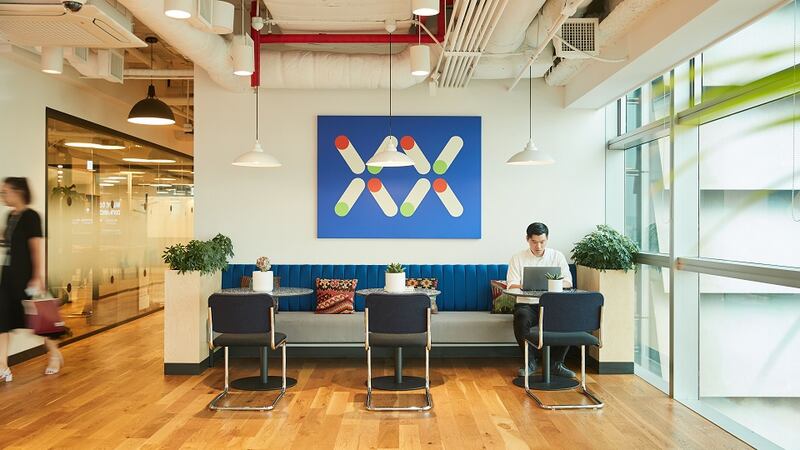The physical spaces we work in have the power to foster collaboration – or stifle it. WeWork's recent research in partnership with brightspot strategy suggests that working from home (WFH) could be having a negative impact on collaboration. That's an issue for employees and employers alike.
Thankfully the notion of where work is done is no longer a binary decision between WFH or working from the office. There is a third way; ‘work closer to home’.
It ticks a number of boxes. The research commissioned by WeWork since the advent of the pandemic looked at the impact of working from home on collaboration and has found the ability to meet and brainstorm has dropped by an average of 11 per cent among those WFH. For employees whose roles rely on collaboration, that drop was closer to 15 per cent.
Lack of scope for serendipitous meetings – those informal chats and unplanned interactions that make up so much of life in the office – was even starker, with 25 per cent of respondents stating their ability to have unplanned interactions had fallen.
Little wonder the survey found 90 per cent of workers want to return to the office for at least one day a week, with 20 per cent of them declaring a desire to return five days a week.
The survey also found that workers who depend most on collaborative work, defined as spending more than 65 per cent of their time working with others, struggle most with WFH.
When interacting with colleagues remotely, they struggle to make decisions quickly, solve problems creatively and generate new ideas, it found. Obtaining training, providing mentorship and building trust is harder, as is connecting to company news and culture.
With almost half of all professional office employees engaging in some kind of collaborative work, it’s important to get the balance of productive collaboration right for long term business health.
PwC's recent US Remote Work Survey discovered that 50 per cent of employees go into the office to collaborate with other team members. For 39 per cent of those, difficulty with collaborating was the number one reason people give for being unproductive during lockdown.
WeWork Dublin

WeWork’s growing network of buildings across Dublin provides an effective solution to the challenge because it allows employers a way to offer their employees a way to work from home near home.
With flexible workspace at buildings at Charlemont Exchange, 2 Dublin Landings, Iveagh Court and 5 Harcourt Street, all are easily accessible for many suburban workers via active commutes such as walking, biking or running.
It means giving people the flexibility to work from where is best for them
Thanks to growing demand for flexible workspace solutions, WeWork’s newest offering, Central Plaza, will open on Dame Street next year.
The key learning employers have taken from the pandemic is the need to adapt their operating model, explains Mathieu Proust, WeWork’s General Manager for the UK, Ireland and Emerging Markets.
The coronavirus crisis has proven that WFH can be successful in certain scenarios, but what is really important is a culture of flexibility, so that organisations can adopt “the best model” for them, and their employees.
“It means giving people the flexibility to work from where is best for them,” Proust explains.
Access all areas

WeWork responded quickly to Covid-19 with enhanced health and safety protocols. As a global business, it was able to adopt best practices from China very early on, ramping up the cleaning of high touch areas, upgrading HVAC (heating, ventilation and air conditioning) systems, providing personal spaces and enabling social distancing.
Another smart innovation was to open access to all of its buildings globally, to all of its members. It was a radical response that has proven popular.
“People love the flexibility it offers. After the first few weeks of the pandemic they came to miss the social and collaborative element of large buildings, that ability to have coffee and discuss ideas and projects, as well as their personal situations – all the things that can be most challenged by staying at home,” says Proust.
Design-driven solutions were developed to allow for all kinds of workspaces, from quiet nooks for focused work to meetings rooms and breakout spaces designed to promote collaboration.
Working in a beautiful office building that supports collaboration has the power to make employees feel better and be more productive. “When they need us, we want to give our members the opportunity to be fulfilled from their workplace environment,” he says.
Work from home, near home
The right building, in the right location, is an important employee recruitment and retention tool too. “By having smaller offices, closer to where people live, you are offering a reduced commute and, in different parts of the city, accessing different talent pools,” Proust says.
Over a long period the risk of extended WFH is that it could damage corporate culture and loosen the psychological contract between employer and employee, because as time goes by the emotional attachment to the organisation will be impacted.

